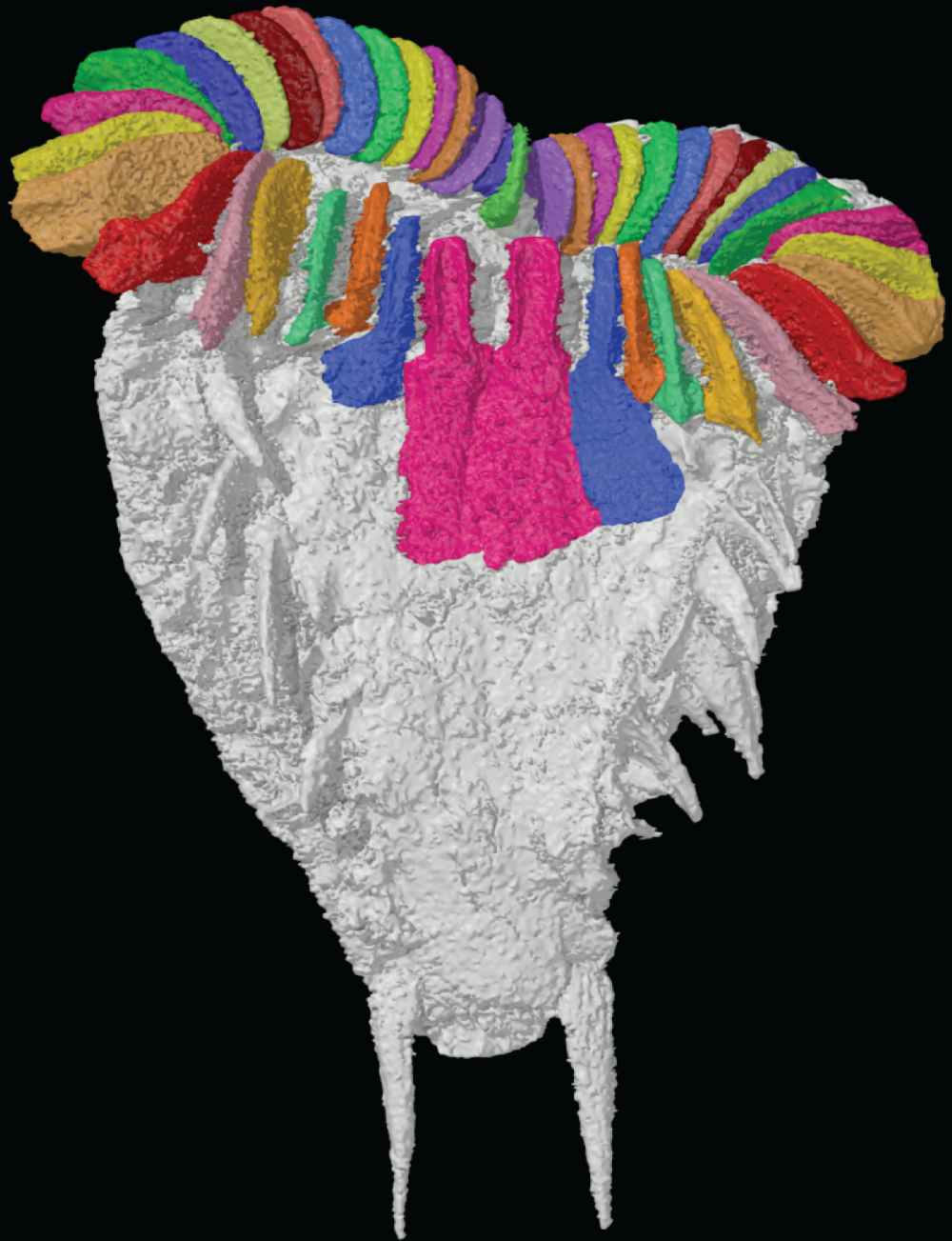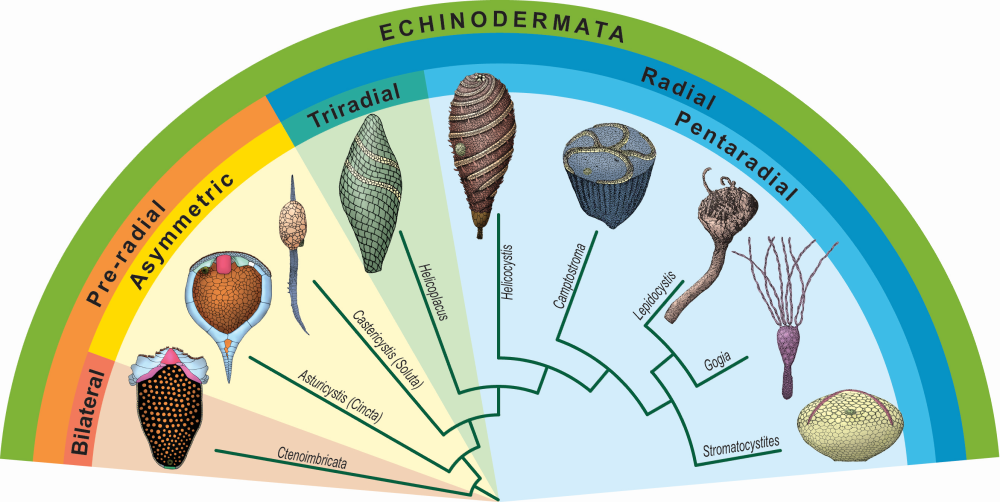Starfish are beautiful organisms, but if you think about it a little deeper, they’re also really strange. As echinoderms, they’re relatives of sea cucumbers and urchins, meaning at one point they shared a similarly symmetrical body plan split down the middle (like us). Now, they have a unique and bizarre fivefold symmetry. So, when did things get so wacky for the starfish?
A 500-million-year-old fossil from Morocco is helping scientists to answer the evolutionary mystery of how starfish evolved from animals with bilateral symmetry to the pentaradial symmetry we see today. It was discovered by Natural History Museum scientists and has been named Atlascystis acantha.
Found in the Anti-Atals mountains of Morocco, it marks the oldest known echinoderm with a bilateral body plan. Most exciting of all, it bridges a crucial gap in the fossil record between the two-sided echinoderms of the past and the five-sided starfish we find slithering across the seabed.

The Atlascystis fossil. Bands of color demonstrate the repeating segments across its bilateral symmetry.
Image credit: Steffi Woodgate
Its state of preservation was good enough to work out that it had a flat, spiny body, and even had a specialized set of skeletal plates that it probably used to get around. These appear to be similar to the ambulacra today’s echinoderms use to move and feed, and is a trait we’ve never before been able to identify in such an early echinoderm.
“This fossil evidence allows us to piece together how the body plans of starfish and their relatives evolved step-by-step from ancestors that were much more similar in shape to other animals,” said Dr Imran Rahman, Principal Researcher at the Museum and co-lead author of the study, in a release emailed to IFLScience.

A new tree of life for Echinodermata places the bilateral iterations at the base of the tree.
Image credit: Samuel Zamora
Using 3D imaging, growth analyses, and cutting-edge phylogenetic methods, the team were able to place Atlascystis at the base of the echinoderm family tree. This overturns earlier ideas that bilateral echinoderms were side projects branching off of highly evolved starfish in the group’s evolutionary tree. Instead, it seems that the five-armed body plan we see in starfish today likely evolved later, through the duplication of a single ambulacrum – something that could only happen once echinoderms had lost any kind of defined trunk region (relatable).
“The fossil record remains our only direct insight into the evolutionary history of groups through time,” said Dr Frances Dunn, senior researcher at the Oxford University of Natural History. “[This] discovery shines a light on the first steps of the evolution of one of the most recognisable body plans we find in animals today: the starfish.”
A fresh reminder from a very old echinoderm that the fossil record holds invaluable information that can save the day when genetics alone can’t give us the answers. With the discovery of Atlascystis acantha, we can now start to unravel how the echinoderms assembled their perplexing body plans over the course of millions of years (and yes, that includes the one with all the “penises”).
The study is published in the journal Current Biology.
Source Link: How Did The Starfish Become A Star? 500-Million-Year-Old Fossil Solves Evolutionary Mystery